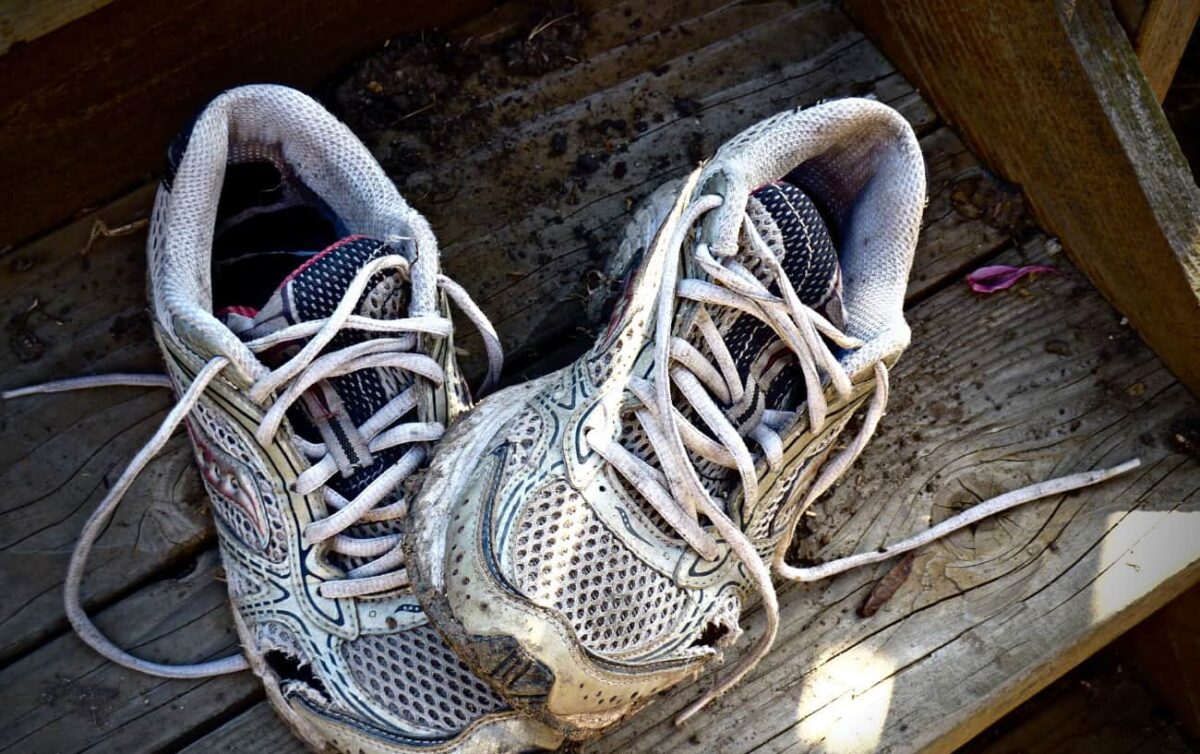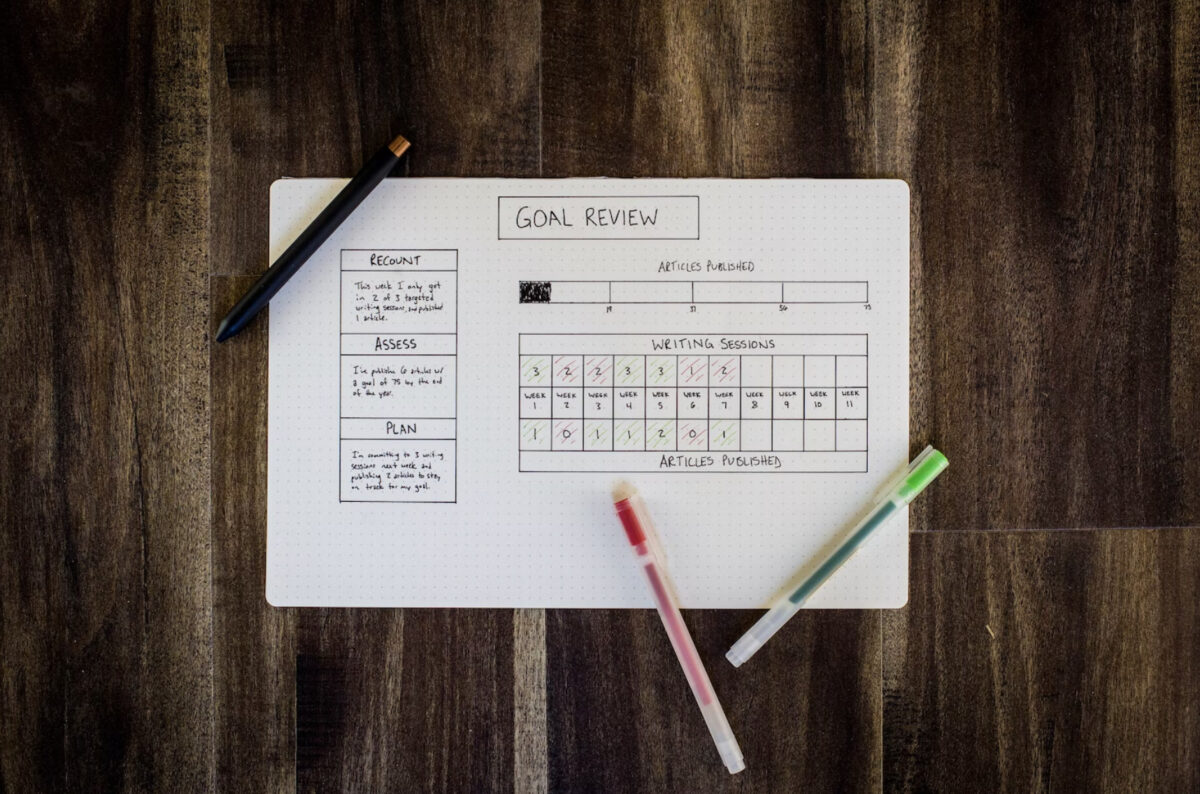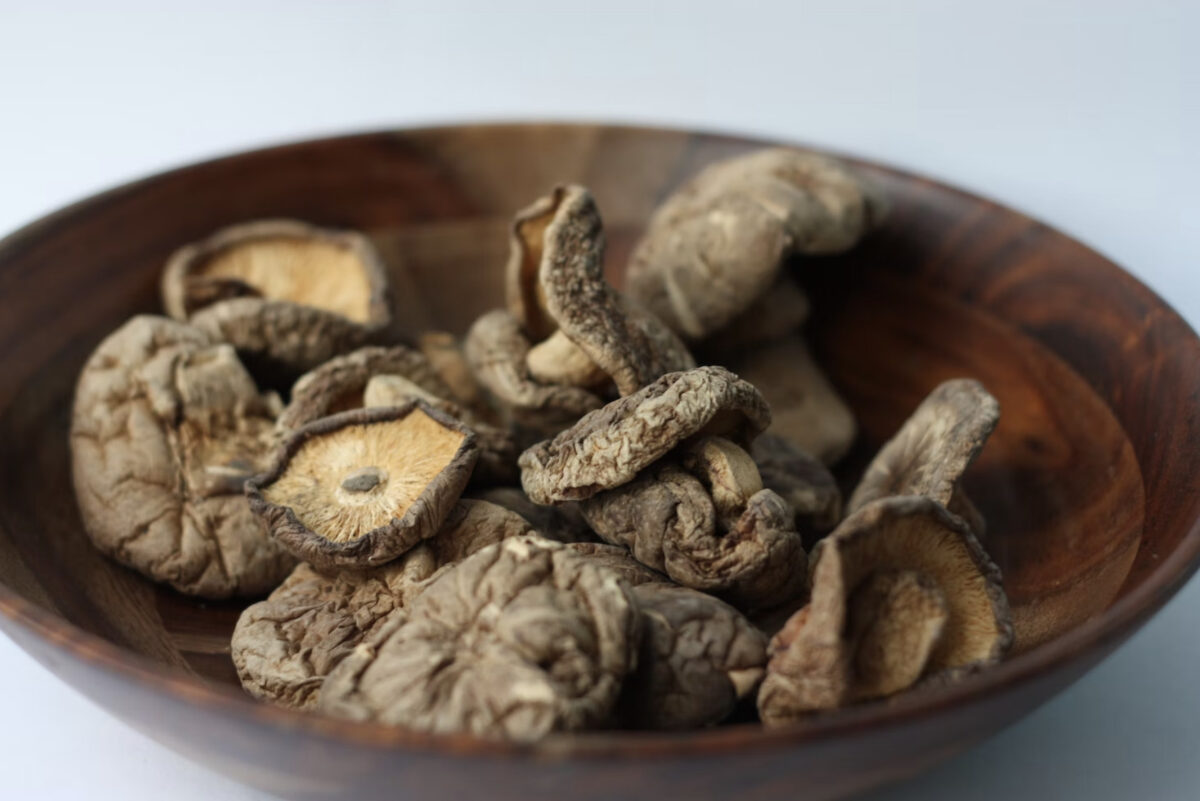By Tim Irvine, MSc
You would think that after five marathons and thousands of kilometers of running, I’d know a bit better than to let my shoes get to the point where they are doing more harm than good. That’s just not the case.
I was recently reminded of this when I put on a new pair of Adidas Adi-Boosts. My current pair of ON (SWISS running shoe brand) shoes is ‘dead.’ That’s the best way I can describe it. There is just no comfort left, nor is there the support I had when I first put them on. I loved them when I tried them in the store and went for those first few comfy runs.
It’s the middle of July, and for most of us who run, it’s also the middle of the running season. A perfect time to reassess our shoe situation.
Running shoes are a bit like your friend’s kid that you haven’t seen for years. When you pay attention to them, you can’t believe how much they’ve changed and how much time has gone by, just like me and my running shoes. With that in mind, do you know how old your shoes are?
Our very own Victoria Lavinskas, the Running Physio, recommends changing your runners “…when the architecture of the shoe changes, and there is apparent wear and tear, or when the cushioning doesn’t bounce back anymore.” One of these recommendations is visual, and the other is by feel.
In the picture below, you will see my ‘old’ ON shoes. They don’t look that bad, and therein lies the problem. When they are stacked up against a brand new pair of any brand, they do look tired. For me, the feel is always the big tell. As soon as I put the Adidas on, I knew instantly that the ONs had literally worn out their welcome.
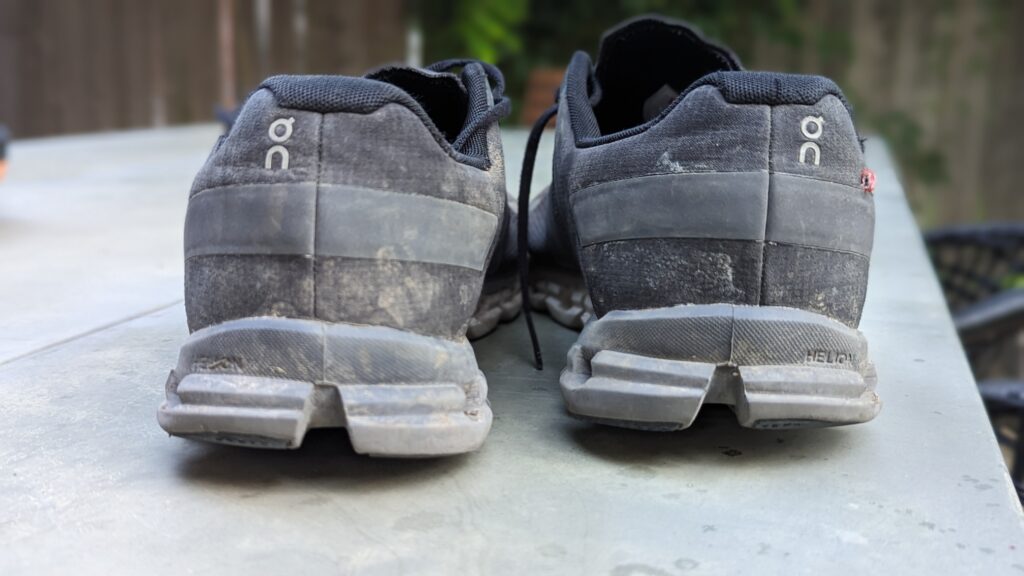
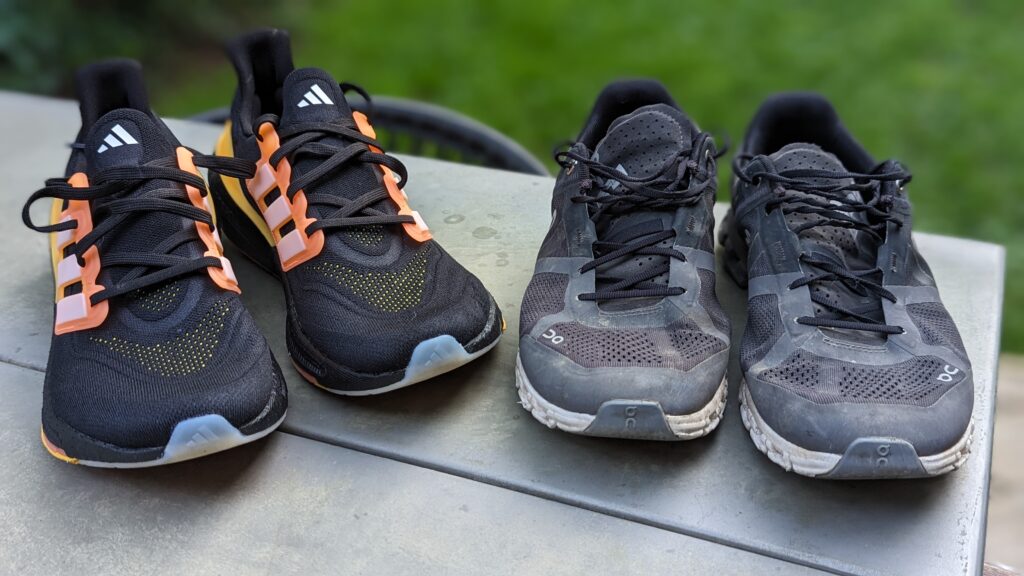
Jessie Nusselder, a trainer at Totum and a sub 5-minute 1500m runner, has additional information to factor in:
“Running shoes tend to have a ‘lifespan’ depending on the material they’re made of. The average shoe will last approx. 500km, and shoes made of lighter material like carbon will last approx. 150-200km. So, for the long-distance runner putting in about 75km of mileage per week, they should be changing their shoes every 6 months or so. While training in varsity, our mileage could be between 80-100km per week, which included more intense workouts, so we were recommended to get new running shoes every 4 months.”
The time is now to assess your footwear. Here are four steps to consider:
- Do they look old and worn?
- Does the tread on the sole of the shoe look worn, and is the heel misshapen?
- Are they more than four months old, and have you put on 20km or more weekly?
- Lastly, put them on and think about whether they feel ‘springy’ or ‘cushy.’ Yes, those are technical terms. 🙂
Answering the above questions will help guide your decision on whether to buy new shoes or continue with the current ones. If you are not sure, you likely need a switch.
When you do buy new shoes, put a reminder in your calendar four months from when you first put them on. This will be a good guide to remind you to check whether your shoes could use a replacement. If you haven’t run much, push your reminder out two more months. If you’ve been wearing them for day-to-day activities, that will still create wear and tear. Not as fast, but it still happens. Additionally, if you happen to be passing by a shoe store, just try a new pair on and see how they feel.
The point is, almost all of us wait too long, and if you are putting mileage on those shoes when they no longer provide support, you could be setting yourself up for an overuse injury.
Happy running in those comfy new shoes.

